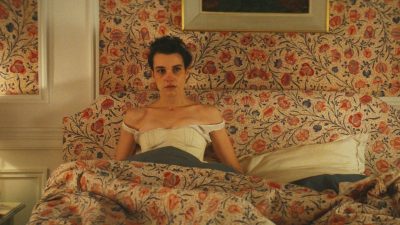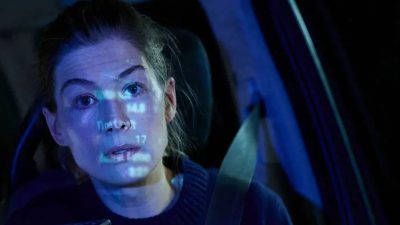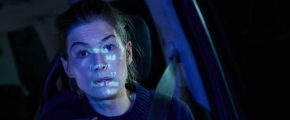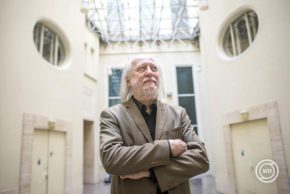Fotografiska New York presents Vivian Maier: Unseen Work, the first major retrospective in the United States of this remarkable, experiential artist. The display sheds new light on Maier’s extraordinary body of work, revealing a number of new photos. Her unseen work, yet again highlights her talent in capturing the essence of post-war America through street photography, fleeting moments, impressions and Super 8 films.
The exhibition, organized by diChroma Photography and Fotografiska New York in collaboration with the John Maloof Collection and the Howard Greenberg Gallery, offers a comprehensive view of Maier’s oeuvre. Featuring approximately 200 works.
Maier, “the Spy”
Vivian Maier, born in the Bronx in 1926, led a life that was both remarkable and very private. She worked as a nanny while passionately documenting the world around her. In a twist of fate, Maier’s hidden treasure trove of photographs was uncovered in 2007 when one of her storage lockers was auctioned off due to unpaid bills. The locker, located in Chicago, contained a vast array of negatives that would soon ignite a global fascination with her work. John Maloof, who stumbled upon Maier’s work at the auction, became instrumental in bringing her photography to public attention.
This new collection of photographs redefined her place in the history of photography, and created a renaissance for her work. As Maier herself once said, “I am a sort of spy,” and her photography indeed reflects this sentiment, capturing moments of candid intimacy and raw observation. “If you really have something to say better to be behind the camera than in front of it,” she noted about her images, often speaking volumes about the world and her perception of it, from behind the lens.
Remarkable Identities and Tiny Gestures
In the section of Remarkable Identities, Maier’s portraits emerge as powerful statements about the lives of those often ignored by society. Her direct, unflinching gaze captures individuals from various walks of life. Unlike other photographers like Stanley Kubrick, who famously paid people to create dramatic street scenes and throw tantrums for his camera to catch, Maier’s portraits are authentic and spontaneous. Her subjects include both the impoverished and the affluent, often juxtaposed to highlight the disparity between different social strata. Maier’s unposed, direct, “ugly” portraits present a painfully realistic view of life that challenges viewers to confront the reality of the American Dream’s shadow.

Subtle Gestures reveals Maier’s keen observation of the small details of urban life, first in New York then in Chicago. Her images capture the everyday moments—hands in various states of rest or activity, people impatiently waiting at street corners, or children lost in their thoughts. These photographs reflect Maier’s deep understanding of human behavior, revealing moments of stillness and contemplation. Lives and stories unfold around her. Each gesture, whether it is an elderly woman’s hands resting in her lap or a man’s legs as he reads a newspaper sitting on a bench, adds to the narrative of ordinary life. It only takes a keen pair of eyes to notice them.
Childhood and Playfulness
The Childhood section is deeply personal, reflecting Maier’s experiences as a nanny. Her images, filled with a sense of wonder and innocence, capture the playful and introspective moments of childhood. Whether showing children playing with bike wheels in a garden, gazing out of windows, discovering a new game or getting annoyed by adults. Maier’s photographs reflect a deep empathy and sensitivity, providing a unique perspective on the world through a child’s eyes. This section of the exhibit echoes the poetic sensibilities found in the works of filmmakers like Andrei Tarkovsky, who also frequently explored the intersection of child-like innocence and imagination.

In Kinetic Play, Maier’s experimentation with film and movement takes center stage. During the early 1960s, while living with the Ginsburg family by Lake Michigan, Maier transitioned from still photography to 8mm film. This period marks a significant shift in her artistic approach, incorporating movement and the element of time into her work. Her use of Super 8 cameras to create dynamic sequences adds a cinematic quality to her visual storytelling. The resulting films, which often feature playful and fragmented imagery, unedited and detail-oriented, demonstrate Maier’s innovative approach to capturing motion and beauty in everyday moments. I believe the most compelling part of the exhibit is the corner where Maier’s short films are projected side by side, offering a dynamic view, themes and tones of her work with film.
Abstract Exploration and Photographer of the People
Abstract Exploration showcases Maier’s more experimental images. This section includes photos that move beyond conventional photography, focusing on details that verge on abstraction. Close-ups of wet leaves on the pavement, discarded gloves at a construction site, or raindrops on the kitchen window challenge viewers to interpret them beyond their literal subjects. These abstract images reveal Maier’s ability to see beyond the obvious, creating a visual language that encourages viewers to engage with the interplay of light, shadow, texture and more. To me, this section was the biggest revelation in regards to Maier’s world. A really inspiring, hyper creative set of photographs!

The exhibit concludes in the Social Dynamics section offering a broader view of Maier’s engagement with social life. This final section highlights Maier’s ability to capture the collective rhythm of urban life, from street scenes to social gatherings. Her work reveals a deep connection to the social fabric of the city, documenting both the ordinary and the extraordinary moments that define collective experience. This aspect of her work underscores her role as a chronicler of social dynamics, bridging the gap between individual stories and the larger societal context – Maier was indeed not just a “lone traveler”.
Vivian Maier: Unseen Work, runs at Fotografiska New York through September 29, 2024.
~ by Dora Endre ~



























Comments